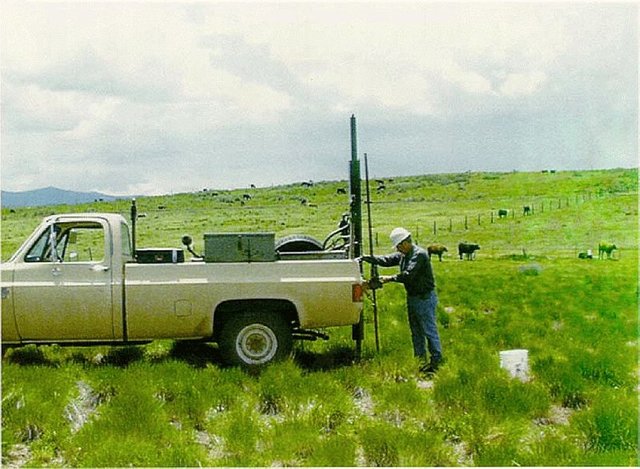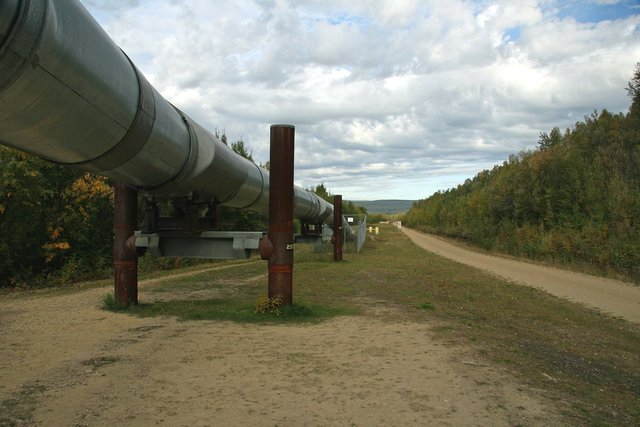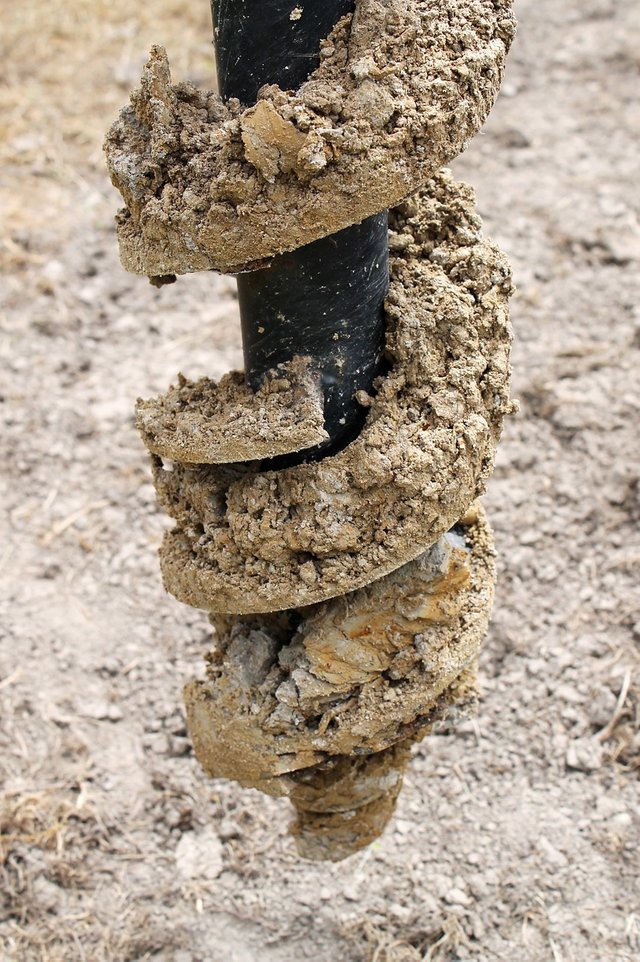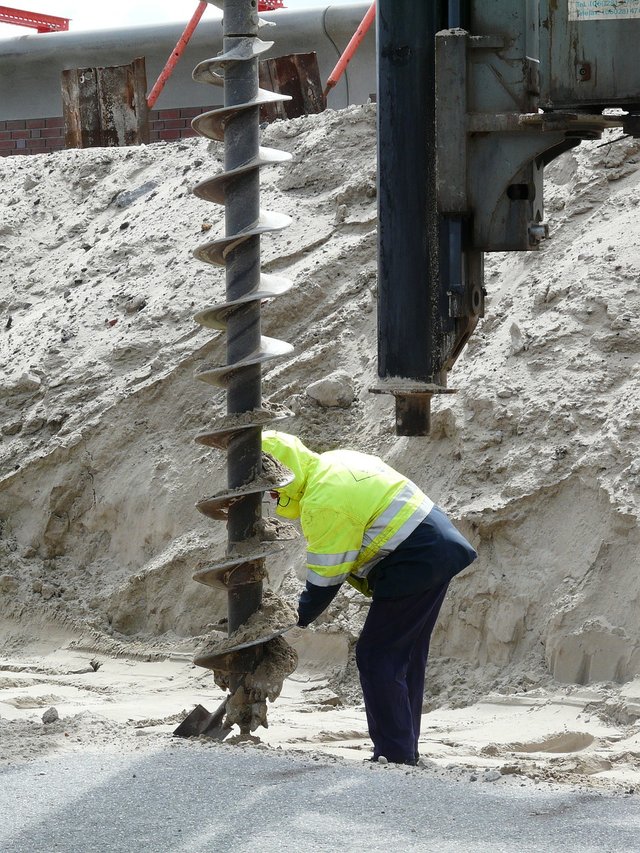Understanding the Principles of Geotechnical Investigations and Soil Sampling (Part 2) - The Bedrock for the Design of New Structures

In addition to what I discussed on the geotechnics of engineering in my last post, I want us to know that the specialty of the field of geotechnical engineering does not involve only the utilization of engineering principles, but also the use of scientific methods to collect, process and analyze ground data, so as to get interpretation of the physical properties of the ground, which is required in the design and construction of buildings and other civil engineering structures.
One of the parts of geotechnics that is based on practice is foundation engineering. The practice of foundation engineering is a perfect example of how scientific method is used efficiently in the geotechnics of engineering. This is because an understanding of the basis of scientific methods help find ways to use in the application, designing and development of new solution in engineering.
It takes 4 years to be a graduate of geotechnical engineering, which is a discipline within civil engineering where you can get a masters degree. Geotechnical engineers are controlled as professional engineers and issued with license in some states in the USA, particularly California and Oregon.

In my previous post, I discussed the relationship between geotechnical engineering and engineering geology and the peculiar difference between the two. Despite this difference, there is need for the geologists of engineering and geotechnical engineers to carry out thorough geotechnical research together, in order to get geotechnical informations of a site.
The information gotten on the site is very much required in denoting the physical properties of the soil and rock that makes up the site; thus, helps in the design of foundation and any structures made from earth for the proposed structure, and for the fixing of faults in the structures caused by conditions below the surface of the earth.
There are two forms of geoteechnical investigations carried out on a site, and they are subsurface exploration, (which include laboratory test and soil sampling of representative soil samples of a site), and surface exploration (which involves geophysical method, photogrammetry and geologic mapping) of a site. The methods of geophysics, can as well be used to get the required informations about a site.

For the succesful design and construction of underground transmission lines, radioactive waste disposal, oil and gas pipelines, and solar thermal storage facilities, there is need for the measurement of thermal resistivity of soils and backfill materials required for its achievement to be carried out by geotechnical investigations.
In civil engineering projects, some tests are done on the site, and are referred to as "in situ" test, while others are carried out in the laboratory, and are called laboratory tests. Tests, ( the common ones been cone penetration test and standard penetration test) involved in subsurface explorations are mostly done on site.
Furthermore, a representative soil sample, taken below the surface of the earth during the process of investigating a site are often tested in the laboratory to obtain its fundamental properties.
The conditions of soil can as well be determined by excavating a pit or digging a hole in the ground, and then conducting test for samples from the pit or hole, which is often referred to as trenching or test pit. Test pits and trenching are usually done to determine or locate fractures in the formation of rock causing discontinuity, and the surface along which a landslide separate from the parent material.
In addition, There are some physical conditions that can be observed and determined just by making an expert in the field of geotechnics walk around the site.

The two kinds of boring in geotechnical investigation are large diameter boring and small diameter boring. Due to costs and security concerns, bored pits or holes with diameter of great sizes are seldom used in site investigations, but it is required on certain occassions, especially when there is need for a geotechnical engineer or an engineering geologist to go down into the bored pit or hole, in order to study the layers and the layering process of rock and soil manually in a direct sight of it.
In contrary to the usage of large-diameter boring, geotechnical engineers and engineering geologists make use of small diameter boring usually, in order to make use of soil sampler to take representative soil sample at some depth; carry out in-place tests for soil; and inspect carefully or critically the cuttings of rock or soil.
When a test is to be conducted on a soil, the soil sample can be retrieved either "disturbed" or "undisturbed". In real life, however, there is no soil sample that can really be categorised as being undisturbed, because in most cases, there would always be an iota of disturbance in every soil samples supposedly meant to be described as undisturbed whatsoever.
- Disturbed Soil Samples
There is a change in the original properties of disturbed soil samples during the process of retrieving the soil from the site. Some tests depends on the structure of a soil and others do not. When a test depends on the structure of a soil, then the tests carried out on the soil sample cannot be considered as a true representative of the structural properties of in situ conditions due to an alteration in the structure of the soil.
Tests conducted on disturbed samples can be used to determine soil grain properties, which includes but not limited to; atterberg limits, moisture content, soil type, soil texture, nutrient and analysis of contaminants. It's quite easy to collect disturbed samples because the precision requirement necesary in its collection is not as crucial as that of an undisturbed sample.
How can Disturbed Soil Samples be Collected?

Furthermore, the soil sample retained on the blades of a continuous flight auger, after which the auger is screwed into the surface of the earth and then lifted out for testing is considered as disturbed soil sample. The Standard Penetration Test (SPT) sampler, can as well be used in taking disturbed samples for non-cohesive soils.
- Undisturbed Soil Samples
A soil sample is described as undisturbed when the condition of the representative soil sample retrieved is defined to be closely related with the condition of the soil in its original position before it was tampered with. Thus, the test conducted on the structural properties of the soil is a direct representation of the properties of the soil in its original place or position.
Just as I said earlier, It's quite hard to obtain a sample which is perfectly undisturbed. In many cases, there would always be an element of disturbed soil at the top and the bottom of the undisturbed sample length. When an undisturbed sample is retrieved from a site, it can be used to determine the strength properties of geotechnics, compressibility, permeability and patterns of fractures and so on, which are very much crucial in the design and construction of a new structure.
How to Collect Undisturbed Soil Samples

As a result of this, when undisturbed sample is to be obtained from a soft soil, then we can make use of thin-walled tube samplers referred to as piston samplers which is not efficient when we are talking about sand, gravel and sediments which turn into rocks (preferably reffered to as lithified sediments).
Undisturbed soil sample can as well be collected by forcing a pitcher barrel sampler into the soil. The methods of collecting undisturbed sample as described above are the best available methods. However, there is need for an engineer to be very careful when collecting undisturbed samples so as to get a sample that is truly undisturbed as close as possible, as it depends so much on precision.
When a structure is to be designed or constructed, there is need for geotechnical investigation and soil sampling to be carried out by engineers and geologists, because this helps in giving informations about the geotechnical properties of the proposed site, which in turn helps in the design of a suitable foundation for the proposed structure to rely on.
REFERENCES
It's quite interesting to be a bonafide member of the steemstem community. If you write STEM (Science, Technology, Engineering and Mathematics) related topics, kindly join on on our discord channel here.
This post has been voted on by the steemstem curation team and voting trail.
There is more to SteemSTEM than just writing posts, check here for some more tips on being a community member. You can also join our discord here to get to know the rest of the community!